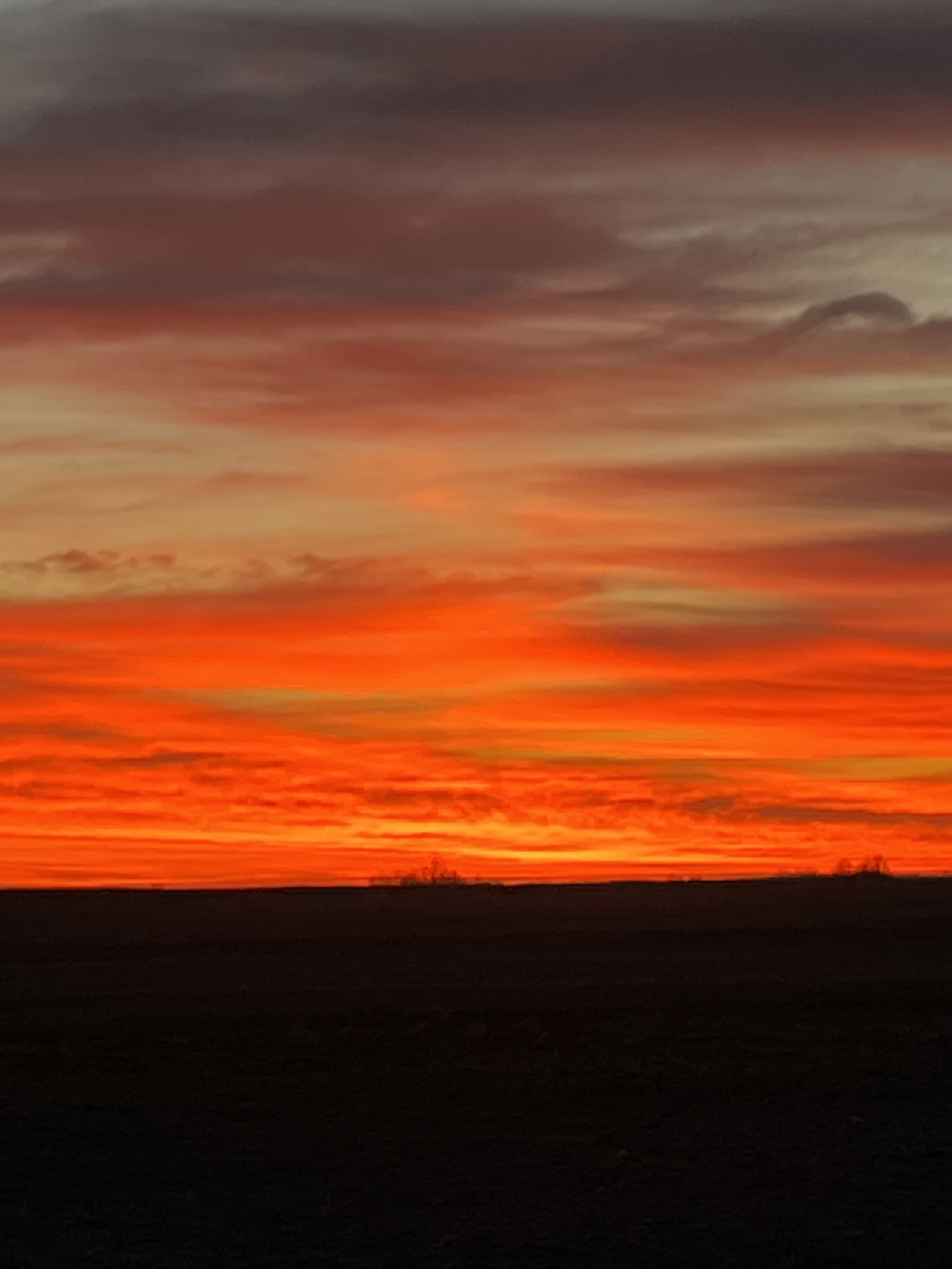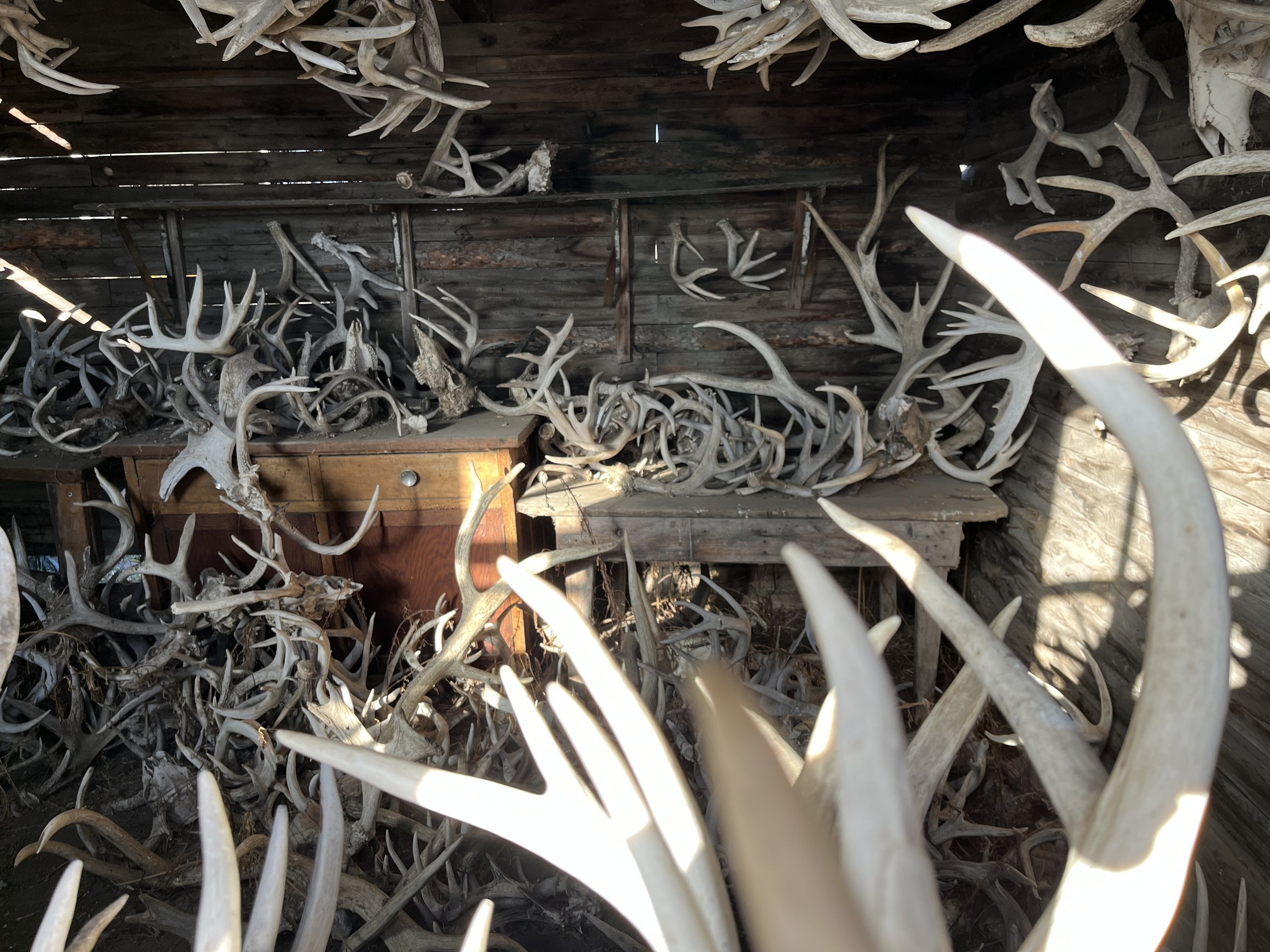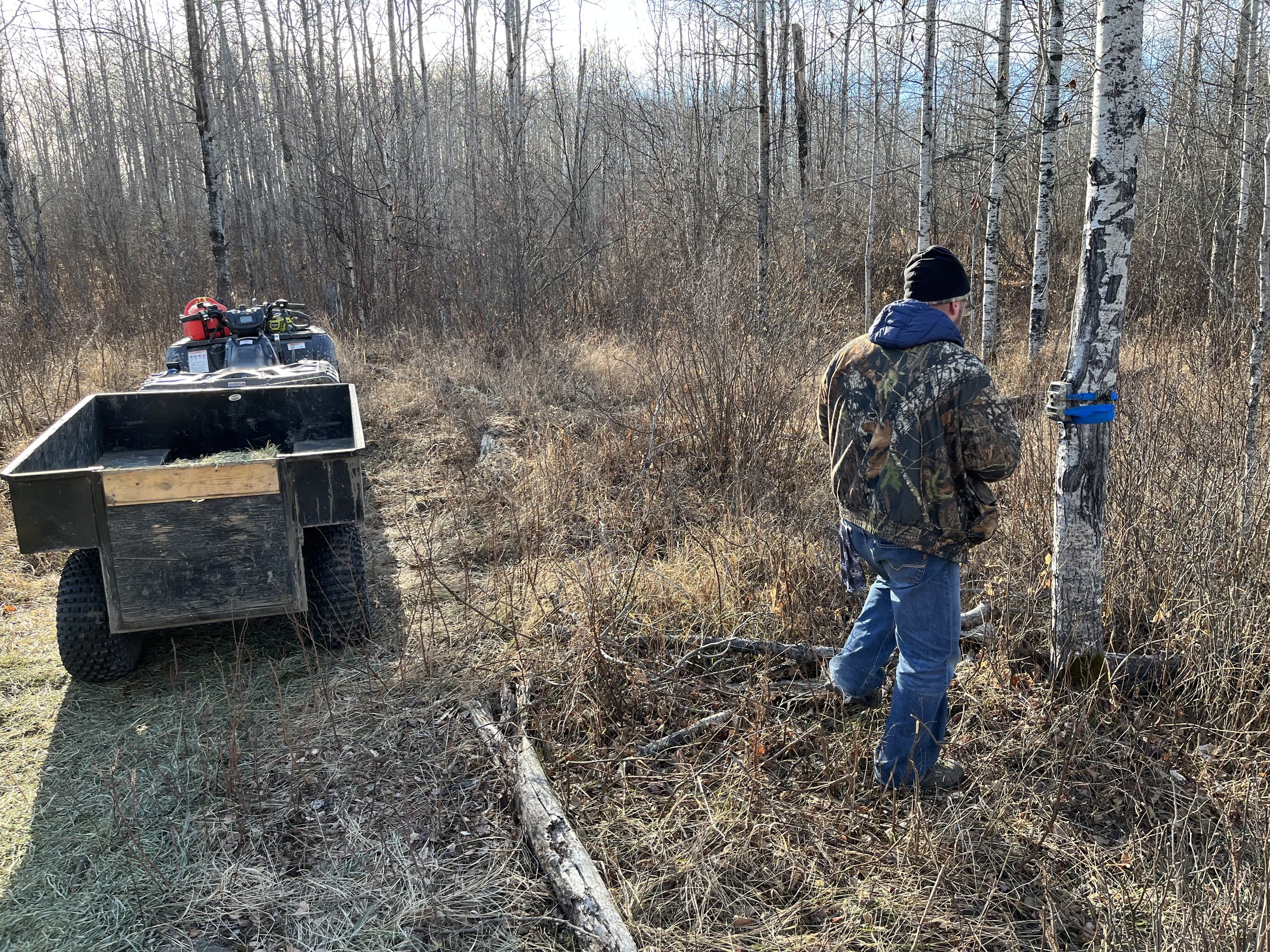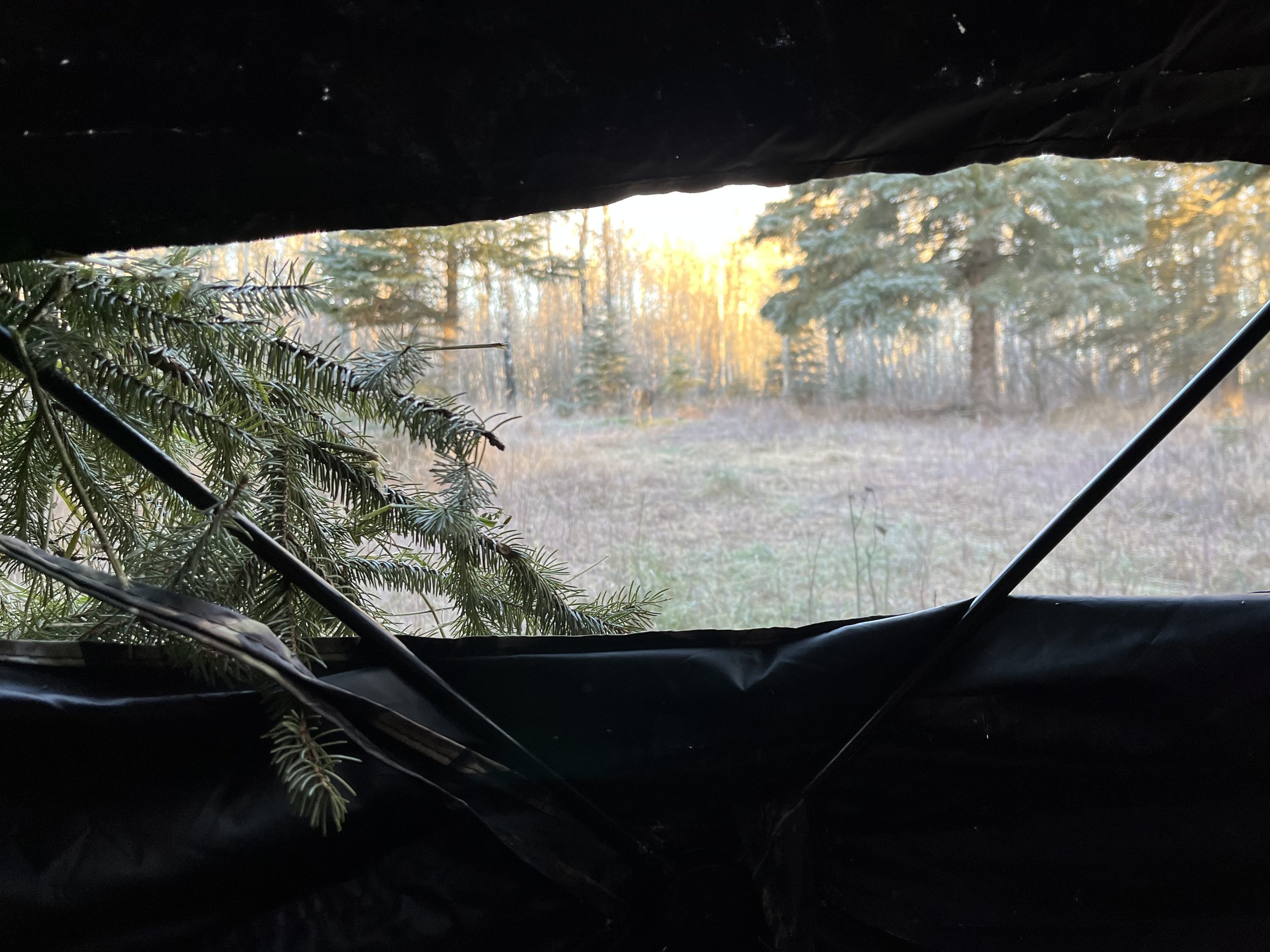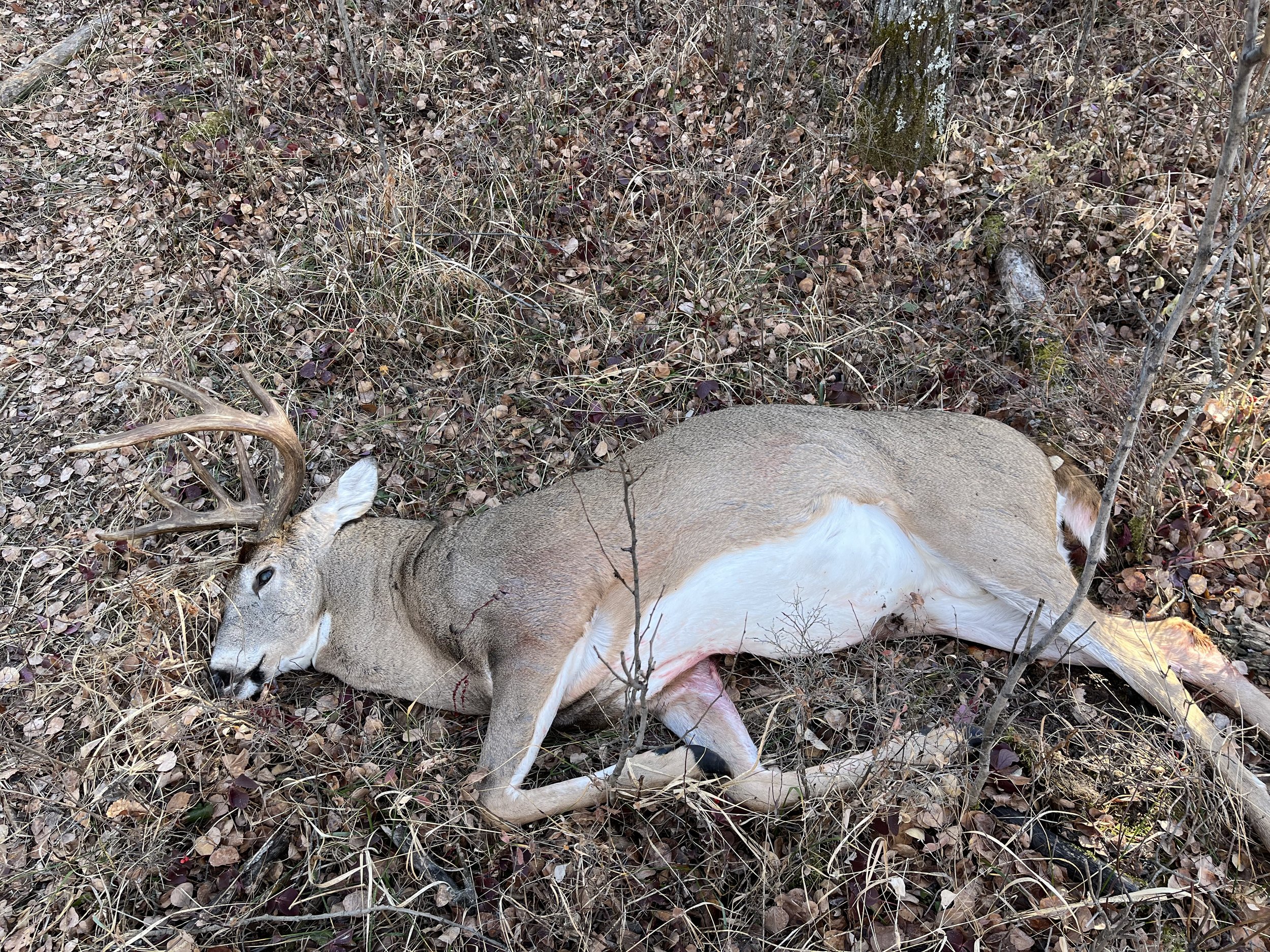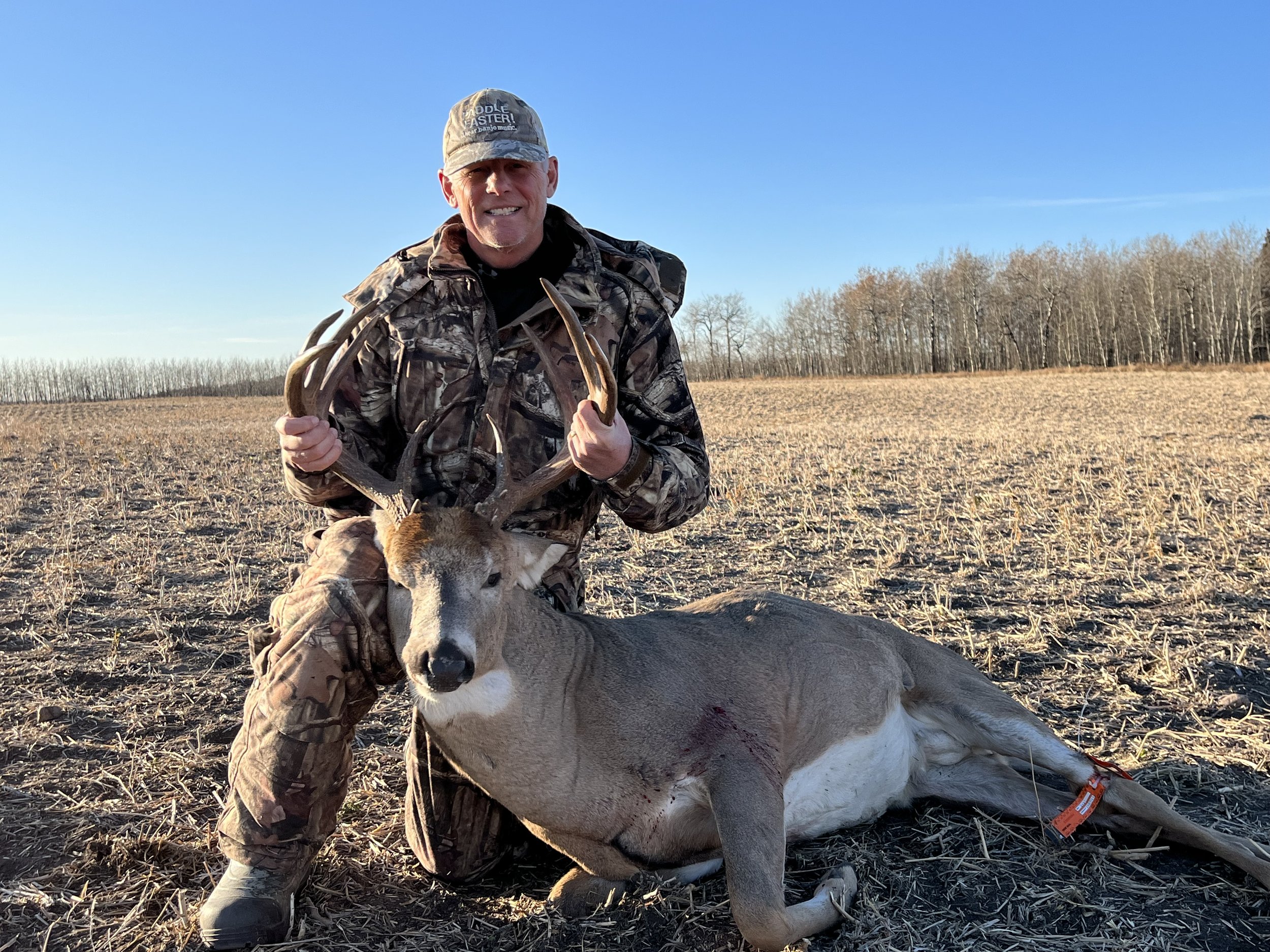Return to Paradise - Saskatchewan 2021
After the season closed in 2019 I started thinking about going on another guided hunt. I would love to harvest a trophy buck on my own land - that’s what I’ve been working toward for so many years - but I couldn’t seem to make that happen. I was getting close, but there was no guarantee that I would get another chance anytime soon. If it wasn’t coming together on my land, maybe going to where the big bucks live would make sense. My hunt in Saskatchewan back in 2011 had always rattled around my brain because of the numbers of deer I saw each day and the possibility of shooting a large buck. See Hunting in the Big League for the story.
The outfit I used for that hunt was Buck Paradise Outfitters, and since 2011 there had been some changes. BPO seemed to have scaled back, and the pro hunters I had hunted with had switched to the outfitter’s brother’s place, Buck Country, but BPO still looked like a good place. I contacted Grant Kuypers and booked a five day archery hunt for 2020.
Of course, COVID shut down everything for 2020, but the outfitter said that he would roll the hunt forward to 2021, and hopefully I could come then. When Canada announced they would be opening to Americans in the summer of 2021, I contacted him and the hunt was on.
I flew from Portland to LaGuardia, to Toronto, to Edmonton, checking my bow case and clothes bag all the way through. I didn’t have to claim my luggage in Toronto and re-check it to Edmonton, but guys with guns needed to do that. At check-in at PWM the Delta guy thought I needed locks on all the holes in the bow case like the gun cases need, but he was wrong. Toronto was confusing because I still thought I needed to reclaim my bags and I didn’t know which gate I was going to. But I made it through, as did my bags.
The COVID thing made this trip a bit of an ordeal. You have to have a negative test within 72 hours of when your flight into Canada leaves the US. The only place that I could find that would guarantee the results in a short time period was in Bangor. That went fine, though it was a 3 hour round trip. Canada requires that you load your passport and vaccine card into their ArriveCan app, along with answering a bunch of questions. When it’s all in there you get a QR code that you show to the officer at immigration. It works well, but it’s really the drag of learning a new thing that you may never use again that makes it an ordeal.
Always easier to hunt mornings out west because of the time change
We all had to wear a mask in the airport and on the plane, and at this point everyone in Canada was wearing a mask in public places. The guy sitting next to me on the NY to Toronto flight didn’t have his mask covering his nose, so I asked him to adjust it. He gave me a hard time and I got my back up, saying “get over it.” I can see how a fight could breakout on a flight. Of course in Toronto, when I made the long hike to my new gate, who was over there also waiting for the Edmonton flight? Mr Nose of course. I got up to look for food and he was sitting in an area with nobody near him, with his mask off completely, and staring at me as if to say, “what are you going to do about it?” I looked through him as if I didn’t recognize him. Fun stuff.
Spent the night in Edmonton and in the morning stopped by Cabelas to pick up a replacement stabilizer for my bow. I noticed just before I left Maine that the weight on the end of my new stabilizer had come unscrewed and fallen off on my last hunt - the vibrations of riding in the Quietkat rack must have caused it to unscrew. It wasn’t a big deal, but since I had some extra time I was able to get a new one.
The Kuypers family are big-time grain farmers
The drive from Edmonton to the lodge in Paradise Hill takes a little more than 3 hours, mostly on divided highways. The entire way is across Great Plains farm land, looking a lot like the Dakotas or Nebraska. Flat land with little drainage valleys, gullies, and draws, all the fields having been harvested. The unfarmable draws are either scrub bushes or forested with what looks like birch or aspen, all devoid of leaves; later I would find out that they are mostly white poplar - popple. I saw mule deer close to the road, and at a distance, a bison just inside the boundary of Elk Island National Park. A coyote trotting along in the midday sun. The “bush” (what the locals call the woods) was not far away from the highway during most of the drive.
I arrived at the lodge in the early afternoon and was able shoot my bow. There were six other hunters in camp, a cook, four guides, and housekeeping. Tom, Dave, Bob, Chuck, Brian, and Charles are from Michigan, Ohio, and PA respectively. The Michigan and Ohio folks drove here, while Charles flew and missed his connection due to a random Covid test. Everyone is friendly. I met Blaine, my guide, over dinner. This week is the start of the rifle season, and I’m the only bow hunter.
The farm’s “Shed Shed” shows the area’s deer hunting potential
I talked with the owner, Grant, as well as his wife Lana, and his two sons Garett and Ian. They farm 4,000 acres for canola, barley, oats, soybeans, and wheat with humongous equipment. There are new grain silos and a new equipment building with huge doors on either end - looks like they are doing well. The Kuypers like to mix their family, farm, and outfitter lifestyle all up together, eating most meals in the lodge with the hunters, and drinking in their very own “Just One More” bar. Grant’s strategy is to limit the numbers of hunters and provide a quality hunt. He has permits to take almost twice the 35 to 40 hunters he will have in camp during the 2021 deer season, with everyone spread out over several weeks. The family and staff are very friendly and truly care about their hunters as individuals.
The first day starts at a very reasonable hour. We’re at 53 degrees latitude, and at this time of the year shooting light is around 7:30. Blaine and I leave the lodge at 6:30. It’s a long ride on gravel roads, towing the quad ATV along with a small trailer that’s used to haul hay and grain back to the blind location. We get to the end of a road, parking by a natural gas pumping unit, and load the ATV trailer with my pack and hard bow case. I ride behind Blaine on the quad, and we travel down a series of old logging trails until we reach a spot where Blaine takes a hard turn into a very narrow ATV path barely wide enough to navigate - you wouldn’t know the path was there if you weren’t looking for it. The trailer gets hung-up on a sapling, and has to be dragged to the side so we can pass.
Blaine and the ATV rig used to haul gear and bait to the sites
The bush here is fairly open hardwoods with the occasional spruce tree. It’s a vast area of “Crown Land” owned by the government. Local hunters can hunt anywhere they want, but the outfitters have only a specific number of permits for hunters from outside Canada, sort of like commercial lobster licenses in Maine. The strategy is to find areas in the bush that are far from the roads (so locals won’t bother getting there) and have a lot of intersecting deer trails, and then regularly put food there to concentrate the deer traffic. Without a regularly baited site to hunt, the chance of a visiting hunter seeing a deer in the Crown Land would be slim. Each guide has a set of bait sites and visits them every three or four days to restock the mix of alfalfa, oats, and peas. Blaine has 16 bait sites this year.
The twisty path runs between trees and we bump our way in several hundred yards until we begin to see a frozen pond. This is the site they call “Stinger.” Blaine passes a camo pop-up hunting blind, which momentarily confuses me before I see another blind and the hay from the bait pile just beyond. The first blind is for gun hunters and the second for me. Grant had mentioned the night before that he had helped Blaine set up this site and that the blind was 32 yards from the bait. As I got out of the quad and started to bring my gear over to the blind I took a look around - the bait sure looked closer than 32 yards.
Blaine unzipped the blind and got the propane heater going. The thermometer in the truck showed minus 14 degrees Celsius, which is about 7 above Fahrenheit, so it had been a cold ride. The heater took the chill off in short order. Blaine wished me good luck, zipped the blind shut, and took off on the quad as I settled in. A doe had been feeding as we pulled in, and she ran off as we were getting squared away. My first impressions were that the shooting light was past, we could have been here an hour earlier, and that the bait was really close. I pulled out my range finder and, sure enough, the near side of the pile was 20 yards. Yes, it would make for an easy shot, but I would be right in the deer’s lap with no room for error.
View from bait: bow blind (under spruce tree) with gun blind in distance
As I got my gear organized I remembered that Blaine had planned to show me some trail cam photos of the bucks that were regularly visiting this site, but it never happened. So I really didn’t know what to expect. Blaine had said that the wind was supposed to be out of the northwest, which would be blowing from the bait to the pond with me in between. But as I was sitting in the blind it seemed to me that the wind was more out of the south. I used my wind indicator powder to see what was up, and it looked like the wind was more out of the southwest, and swirling. Swirling in the general direction of the bait!
The game trails in the area curved to avoid the pond, so this was a good funnel for deer travel. The site is primarily set up for rifle hunting, so the gun blind I saw on the way in was quite close to the pond. I later paced off the distance between that blind and the bait and it was around 60 yards. To get close to the bait, they set my blind farther away from the pond, so there were some trails that ran next to and behind it. Blaine had said that the deer had been coming in from the right side, and I was concerned that the wind was blowing my scent in that direction.
At home I am very careful to be as scent-free as possible when I hunt, understanding that you can’t eliminate your smell but you can make it less of an issue and maybe make the deer think you’re farther away. And you only hunt stands that are downwind of where you expect the deer to be. If a deer gets a full snort of you, that’s game over - they will bolt and probably not be back for weeks. Keeping your scent to an absolute minimum may allow the smell to miss them, or make them think you’re not as close.
At home I wash all my clothes with scent-free detergent, hang my gear on the porch to air out, carefully shower with scent-free soap, wear coveralls in the truck, and dress when I get to the land. With mature deer on camera during daylight, I had hung a stand this summer on Big Clover, which is really in the middle of my land. I decided to get an Ozonics unit to be extra careful when hunting that new stand, and others, but I’m skeptical as to whether that can actually keep the deer from smelling you.
My view of the bait site from the blind
On this trip all of that scent management is impossible. Your clothes and gear pick up scent in the lodge, and in the truck. The kitchen is downstairs from my room. The towels and bedding are washed in regular detergent, and my guide smokes. Trying to minimize odor is a lost cause, so you have to rely on the wind direction, and you really hope that you’re so far in the bush that the deer have never before smelled a human, and don’t associate us with danger.
The chair was comfortable, and the heater was working well, so I nocked an arrow and practiced drawing the bow. When aiming a bow, your line of site is a few inches higher than where the arrow is leaving the string. While it looks like you have a clear shooting lane to the target, the bottom edge of the blind may actually be blocking the arrow path. The window was too high as it was, so I played around with it until I was confident that I could shoot without hitting the blind. I set the bow and nocked arrow to my right side, leaning against the side of the blind without the broadhead cutting the fabric wall. I was ready.
It wasn’t too long before I got a glimpse of an approaching deer. Two does walked in from the northwest, cautiously moving to the bait and beginning to feed. They settled down and ate, but went on alert if I made a noise or moved. I would shift in the chair, and they would lift their heads up at the small noise and stare at me in alarm. I would freeze until they relaxed, gave their tails a shake, and then go back to eating. The same sequence happened if they caught me moving in the blind.
Two does came in first to feed, staying for an hour
As the minutes passed they reacted less and less to what I did, and it got to the point where I could cough, move around, talk to them, start the stove and they wouldn’t mind. I shot a video of a doe snapping her head up when I made a noise and talked to her, then quickly going back to eating. The wind swirled toward them once or twice and they put their noses in the air, but I’m not sure if my scent got to them or if they cared. After one wind shift, one of the does walked away to the northwest, and the other one left a while later. They were in front of me for a long time - maybe an hour. I’m not sure if the swirling wind sent my scent to them and that caused them to leave, or if they just got filled-up on grain and hay.
A while later two more does came into the bait. From that same north/northwest direction. These guys seemed to be spooky from the start and never really settled down. After my experience with the previous group, as well as my hunt here in 2011, I was thinking that you could probably get away with almost any noise or movement, so I was careless with moving and making noise. I don’t know if it was all that, or if they had winded me earlier, but they quickly walked off. I made a mental note that I needed to be more careful going forward. I was on the ground just 20 yards away and, if the deer hadn’t had lots of time to get used to the strange sounds and movement coming from the blind, they were going to see me as a threat.
It was now 10:30 in the morning and I’d been in the blind for about 3 hours when I got a glimpse of a buck with a dark rack coming to the bait from almost straight away. Holy crap! I started to go for my bow, but immediately froze because he was already in the open and looking right at me. I couldn’t move, but I could stare. He was a big bodied deer with a dark chocolate rack, and as he moved around I had plenty of time to judge his age and antlers. He looked old, but I had never seen the trail cam photos so I didn’t know whether he was one of the top deer in this area. I wasn’t sure if I would shoot him, but I wanted to get ready.
Big rubs and scrapes in the area showed that the site was a hot spot
I slowly shifted forward in the chair, moving my body to a more upright position, the chair squeaked, he snapped his head up, and I froze. He stared for several seconds, relaxed, and went back to eating. I moved to get my bow, he saw something and snapped to attention, and I froze. After a bit he went back to the feed. I brought the bow up partway to my lap, he saw or heard something, snapped his head up, and I froze, arrow shaking in mid-air, heart pounding. After a long pause, he went back to the bait. I brought the bow into my lap and hooked my release onto the D-loop.
I was in position, but he was not and, regardless, I still didn’t know if he was a shooter. The adrenaline was flowing through my bloodstream to the point that keeping the release hooked was not easy, and it came off several times. My adrenaline/buck fever slowed down as I told myself that I didn’t have a shot yet anyway. He was mostly facing me, occasionally facing to one side or the other, but for over ten minutes he wasn’t even close to giving me a shot. So I studied him.
At 20 yards, he was close and there was no need to use the binoculars in my chest harness. His neck was huge, sloping down to meet his body right at the brisket - one sign of a mature deer. He had a massive body with a bulging stomach and a sagging back - another sign. His antlers were big, but they didn’t blow me away - maybe the size of his body made his antlers look smaller, I don’t know. He wasn’t a buck with a rack so huge that one look eliminated all doubt, especially when he had his head down. But each time he snapped his head up and looked at me I was impressed by the height, width, and mass of his rack. I decided that I’d be proud to have him on the wall, so I got ready to draw if he moved into a broadside or quartering away position.
“Wait a minute! Really!? I’m going to tag out the first morning!?” That thought crossed my mind, along with other thoughts, such as, what if something bigger comes in after? Or, when he’s on the wall, should he be looking to the right or to the left? I put these thoughts out of my head, decided that this guy was the one, and focused on the task at hand.
The buck was moving around the site, pawing at the hay to get to the grain below, marking the ground by urinating across his tarsal glands, and doing what mature whitetail bucks do. After what seemed like ages, he started to turn to my right, moving into a broadside position and I almost drew. - but he stopped, still barely quartering toward me. Several seconds later he shifted position again, and for the first time he moved broadside, and then slightly quartering away. His right leg moved forward and my target was perfect. His attention was on the feed as I drew my bow, centered the sight in the peep, put my 20 yard pin on a spot low in the pocket, and drilled him. The arrow hit with a thwack, exactly where I was aiming, and he was off like a shot into the bush.
What!!! Only three hours into the hunt and a big buck down!
Wow! That was incredible. A massive Saskatchewan buck and I made a great shot. Only 10:45 in the morning. It couldn’t have gone any better.
I usually wait 30 minutes after a solid shot before looking for blood. If you didn’t make a perfect shot, and the deer hasn’t bled-out right away, you will jump it and it may run a long way and make your recovery hard or impossible. You should sit quietly so even any noise you make won’t spook the deer.
I was so confident of my shot, and jazzed-up after the experience, that sitting quietly was just not an option. After only five minutes, I was on the radio trying to connect with Blaine. I called repeatedly but couldn’t get anyone. Blaine had said that everyone was on the same channel, so I should keep the radio off or the chatter would spook the deer. Not quickly reaching Blaine, or anyone else at Buck Paradise Outfitters, on the radio concerned me. I wasn’t sure if my radio was working, or even if I was on the right channel or pressing the right button. After a while I gave up. But I thought that I could at least get out and check my arrow.
At 248 lbs. dressed weight, the body and neck were huge, the sign of a fully mature whitetail, and making the rack look small
Over at the bait pile most of my arrow was drenched in blood and lying on the ground. The nock end, along with about eight inches of the shaft, were missing. It looked like the arrow had passed through the deer, all but the last several inches, and then the front leg had snapped off those inches when the buck sprinted off. A pass-through in the heart area when the deer is slightly quartering away is an idea shot, so this buck shouldn’t have gone very far. I saw blood on the ground, so I followed it. (Ok, yeah, I know, never do this. Never get on the blood trail so soon after the shot. But, hey, as I said, I was jazzed-up!)
The blood trail was easy to follow - it wasn’t like a perfect pass-through lung shot where blood may be carpeting the ground and spraying up the trees - but I had hit him around the heart, so there was less blood. I went about 50 yards, meeting up with the ATV trail, and then the blood took a sharp turn to the left. I looked up to see where the next splotch of blood was, and just 10 yards away was my piled-up buck. Awesome!
I checked him out, admiring his large chocolate brown rack, the thickness of his bases, and the huge size of his body. After taking some photos, I dragged him out to the ATV trail - ok, that was a chore! Luckily the ground was flat. Then I headed back to check out the Stinger site. I kept checking in on the radio, calling for Blaine, calling for anyone, pressing every button, seeing if I could change the channel - luckily they gave me an idiot-free radio. There seemed to be nothing to do but wait.
The Saskatchewan bush goes on forever
Over the next few hours I called on the radio, walked around the site, warmed up in front of the heater, and ate my lunch. Once, just before noon, I heard Blaine calling on the radio to check in, but he couldn’t hear me. I visited my buck several times to make sure he was ok - there are a lot of coyotes, bears, wolves, and other predators and scavengers in this part of the bush. I lost a trophy to coyotes once, and all it would take would be a single raven to ruin my deer. Finally, after lunch, I decided to walk out toward where we came in, to see if I could reach Blaine. I was careful to memorize the trail so as to not get lost in the bush (can you imagine? I can) and after I had walked and called for about a mile Blaine responded.
We loaded the buck into the trailer, along with some gear from the site, and transported it to the truck. We took it back to the farm and unloaded it for photos, loaded it back in the trailer and took it out to where Blaine would field dress it, loaded it back in the trailer and took it to the shop where Blaine hung it to weigh it, skin it and remove the cape and antlers, and remove the meat. My buck was an old deer that weighed 248 lbs. The rack was rough scored by another hunter at 148 inches - he was behind two other bucks that week that scored 153 and 149, but at 248 lbs. he was the heaviest of the bucks taken at the camp that week. The meat was donated to Filipino immigrant families in the area.
All of the seven hunters at Buck Paradise that week were tagged out by Tuesday morning, and that was a camp record. They were all large bucks that scored above 130 and weighed more than 200 lbs, except Dave’s deer. He shot his deer on Monday morning, 15 minutes before a bigger deer came in to the bait, and they didn’t find his buck until the next morning. By then the coyotes had been into it, so he could only recover the rack. It was a low scoring buck and Dave was verbally kicking himself for not waiting for the bigger buck.
My trip back to Maine was a nightmare. Unfortunately, my layover in Toronto was only 90 minutes, and the flight from Edmonton was loaded with hunters packing rifles and trophies. I didn’t realize that I would be clearing US Customs in Toronto, not LaGuardia, and my layover was not long enough to have my bags checked and released before the NYC flight. I missed the connection by 12 minutes. I had to spend the night in Toronto, and crammed the cape into the mini fridge. The cape got warm on the trip so now I’m waiting to see if the taxidermist can use it, or if he will have to find another cape big enough to work. I am glad that I didn’t try to bring any meat home.
All seven hunters in camp that week were tagged out by Tuesday morning
So, would I hunt again with Buck Paradise Outfitters in Paradise Hill, Saskatchewan? It’s complicated. BPO does a great job, really cares and connects with its hunters, has a friendly staff, and, pardon the cliche, truly feels like family. On the other hand, this hunt was over too soon and felt very different from the other whitetail hunting I do. I expected to hunt for several days and see a ton of deer, so being done in three hours and only seeing five deer was very odd for me.
Tagging out on the first day left me with four days where I didn’t have much to do and, with travel limited by Covid, I couldn’t get an earlier flight. Blaine took me out one day, and it was a good experience to visit a bunch of bait sites in the daytime, but the other days he was replacing part of the transmission on his truck, and there wasn’t anything in the area worth visiting. The travel component of the trip sucked. A full day to get there and two days to get home, with the extra day in Toronto (potentially ruining my trophy), was a drag. I figured out how to pack for the trip, but there’s still a lot of schleping involved.
The in-house bar makes for fun every night
On my way home I ran into a group from Georgia that had hunted with Grant’s brother Dean Kuypers at Buck Country Outfitters. They had 14 hunters and all shot deer the same week. Two deer were over 180 inches, and many were in the 160 and 150 range. Buck Country Outfitters is operating farther north and perhaps the more remote location allows for less hunting pressure from locals, resulting in older deer with larger racks. Or maybe it’s genetics - the Georgia hunters said the buck with the highest scoring rack was the youngest, only 3 1/2 years old.
So Buck Paradise may not have the biggest deer, but it is such a well run and welcoming camp that I can’t imagine switching. The question is more about if and when I want to go through the hassle of international travel to hunt again in Saskatchewan.

